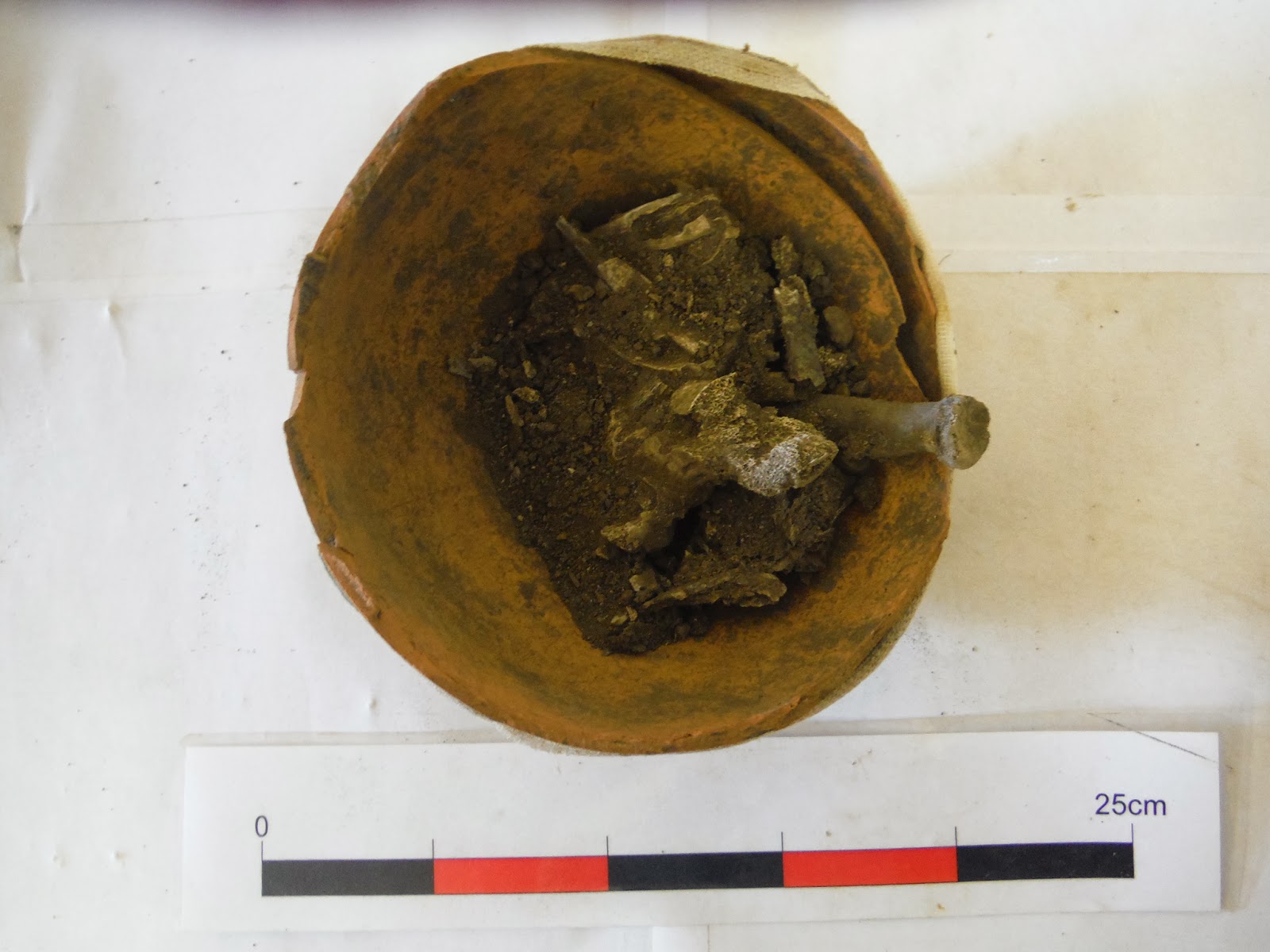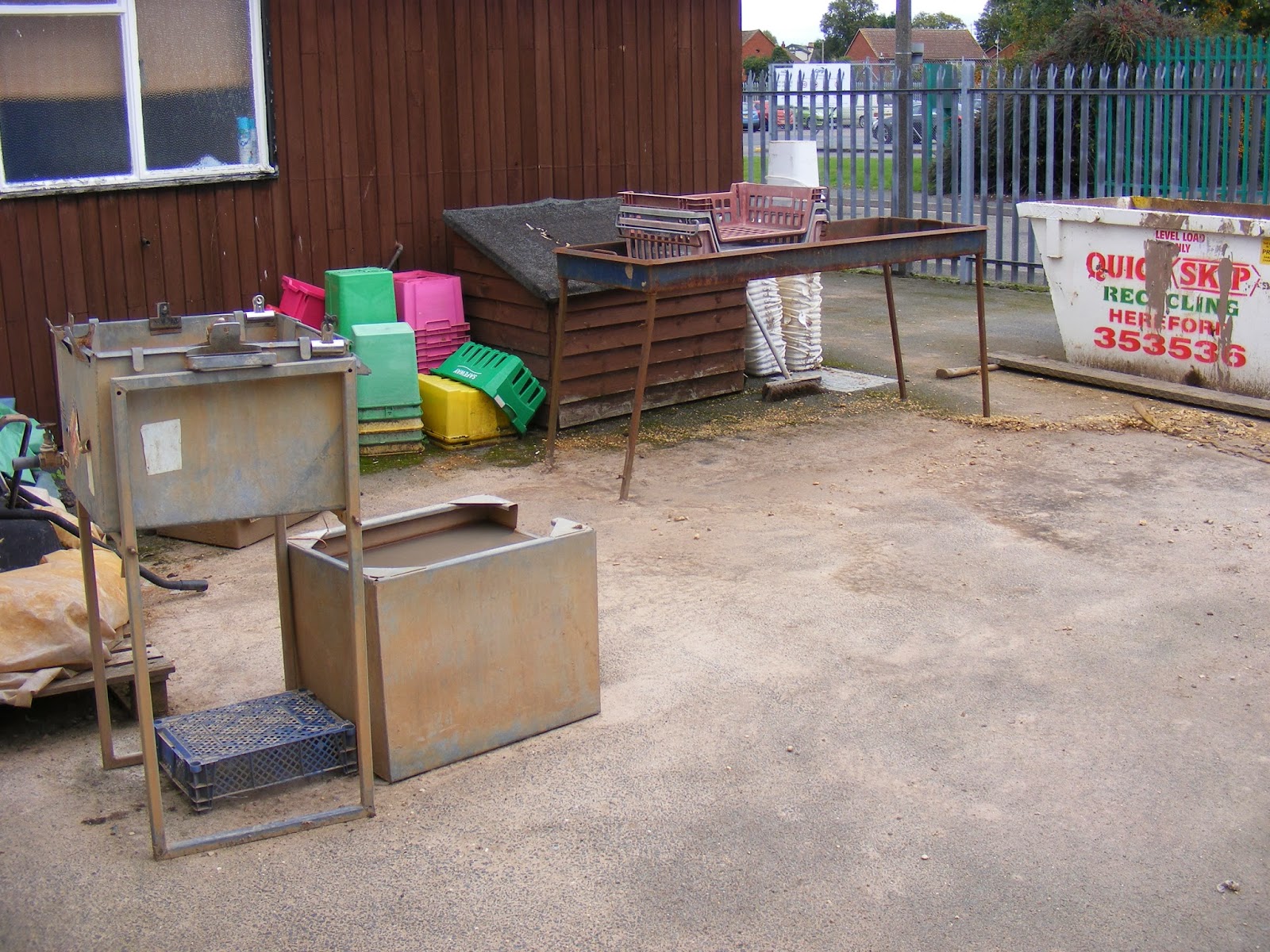This week I
supervised a work experience student called Danniel who came to us from St.
Mary’s R.C. High School in Hereford. She has a passion for
archaeology and wanted to learn more before deciding what to do in her higher
education.
On Monday Danielle did some wet sieving
with Annie Partridge who is now one of the supervisors at Headland after
completing her CBA placement earlier in the year. We then all did some finds
and environmental processing together throughout the afternoon.
Tuesday and Wednesday saw Danielle and I processed one of
the Roman cremations from the Alcester site. This was a thoroughly enjoyable exercise
for both of us and was a rare opportunity for Danielle to do something special
with her work experience. It is amazing just how much you can learn about an
individual from even the tiniest fragments of bone. Jason Murphy is a site
supervisor and osteologist with headland and he showed us both how compressions
on a vertebra visible even after cremation suggested an adult that had lived a
hard life of manual labor. Could this be one of the soldiers from the fort? We
will never know for sure but it was certainly an intriguing possibility, and one I
think Danielle really enjoyed thinking about. Moreover, the discovery of a fingerprint on the cremation vessel, probably from the last person to hold it before it was fired, was an exciting personal touch bringing us tantalizingly close to this Roman individual.
+-+001.jpg)
+-+002.jpg)
+-+003.jpg)
+-+008.jpg)
+-+009.jpg)
+-+011.jpg)
+-+012.jpg)
+-+013.jpg)
The above photographs are taken at different stages of the excavation of the Roman cremation. Note how the larger fragments of bone are at the bottom of the vessel which makes the last stages much more tricky.
Danielle excavating the Roman cremation
+-+017.jpg) |
| Danielle and I washing and sorting the bone from the other content of the vessel. |
After wet sieving the contents of the vessel we had to carefully and painstakingly separate the tiniest fragments of bone from the retent.
Some useful links regarding the treatment of human remains:
Also look for MOLAS guidelines.
On Thursday I took Danielle with me to Alcester Heritage Centre in the morning where I had
arranged to meet Laurence Thatcher who has been instrumental in building local
volunteer support to work on the Alcester site. He and some 60 volunteers had
been washing and marking the finds over the past few months and I wanted to
meet him to find out a bit more about the Heritage Centre, the volunteers and
the community that is so active in preserving their town’s heritage. Since
Danielle had been working on the cremation and environmental samples this week I thought it was a good
opportunity for them all to meet, and for her to get an impression of the kinds
of work involved in community archaeology.
The
Heritage Centre at Alcester is a fantastic facility and we had a good talk
about its past work and future direction. Laurence was keen to talk to Danielle
about her interest in archaeology since the centre was hoping to develop its
teenage demographic. We passed some ideas between us to this end and hopefully
something may come out of it in the near future.
+-+001.jpg)
+-+002.jpg)
+-+003.jpg)
+-+008.jpg)
+-+009.jpg)
+-+011.jpg)
+-+012.jpg)
+-+013.jpg)
+-+006.jpg)
+-+010.jpg)
+-+017.jpg)









